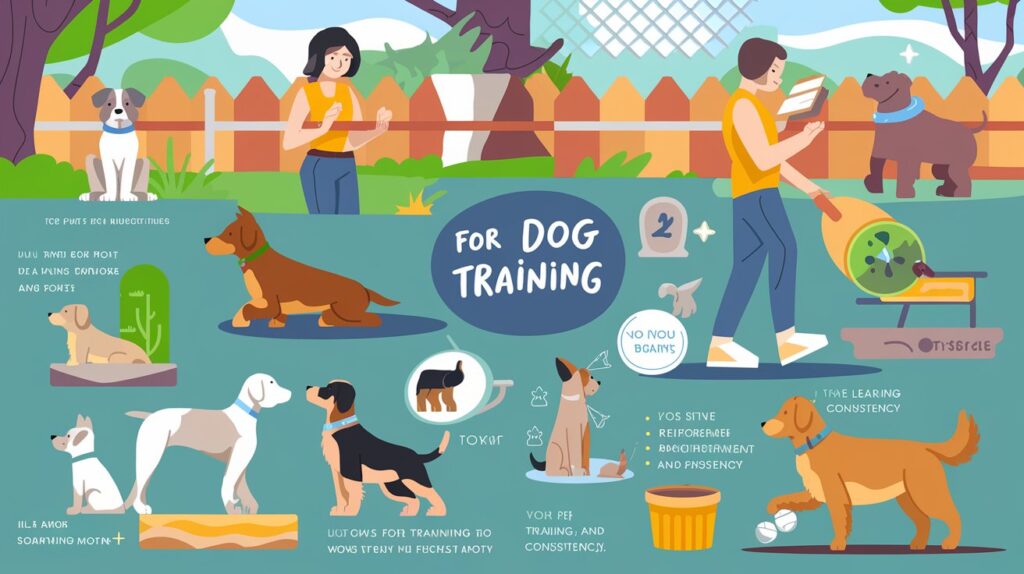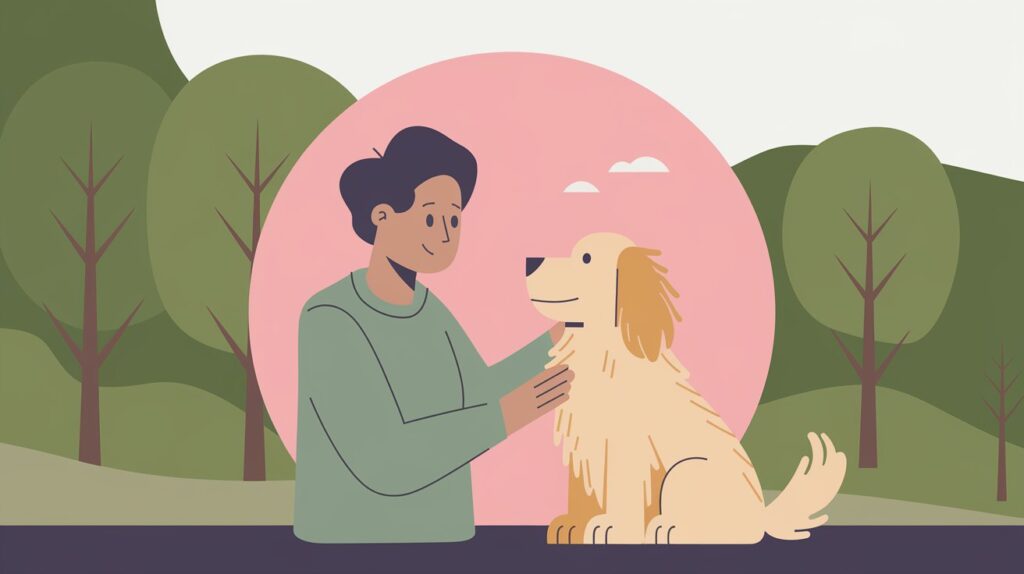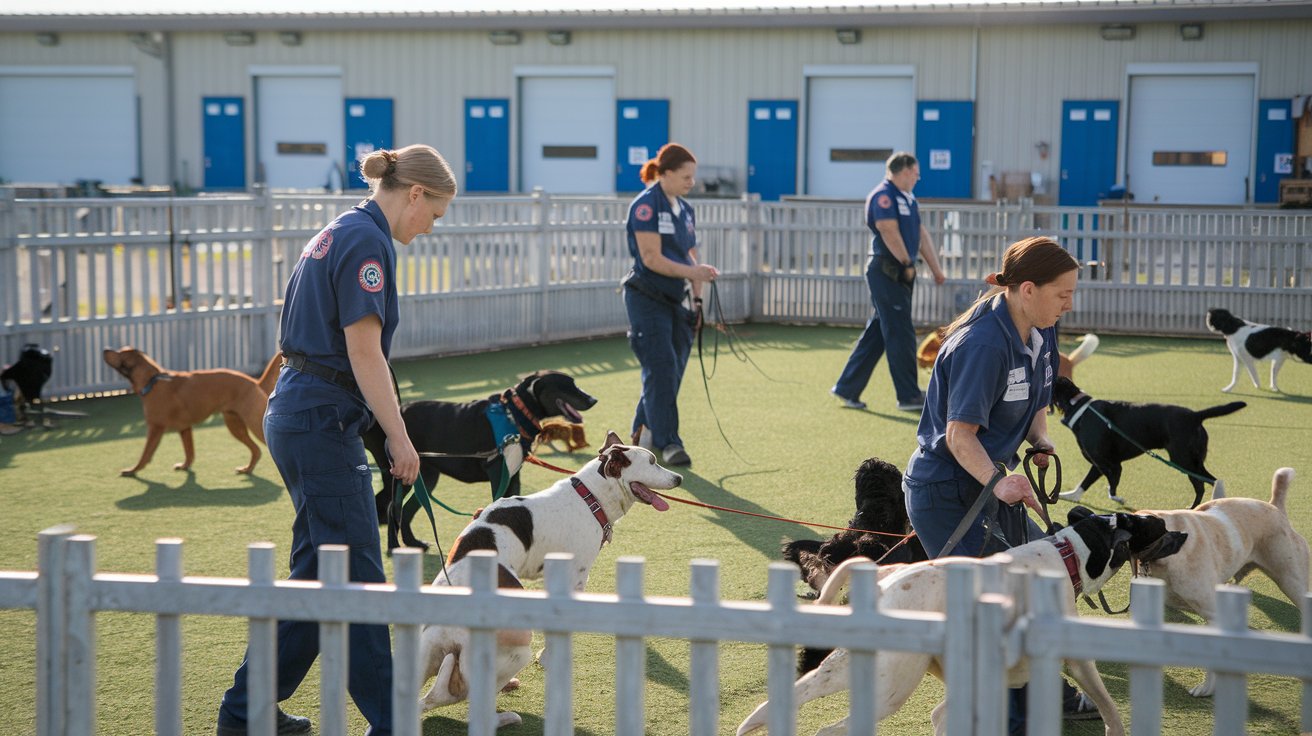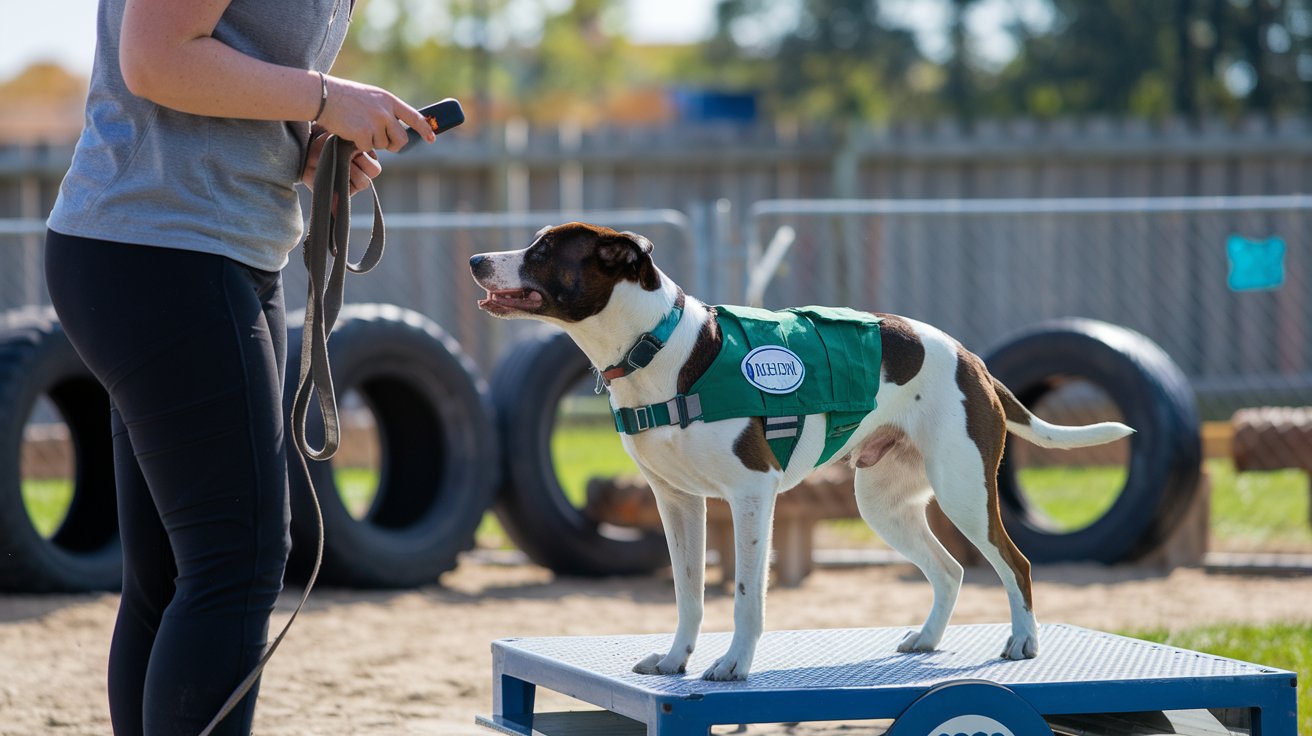Table of Contents
- Understanding Your Dog’s Behavior
- Essential Tips for Dog Training
- Training Techniques and Commands
- Common Challenges and Solutions
- Tools and Equipment
- The Importance of Socialization
- Monitoring Progress and Adjusting Techniques
- Conclusion
- FAQs
Training your dog can be a rewarding experience that strengthens your bond and ensures a well-behaved companion. With the right approach, patience, and consistency, you can teach your dog to follow commands, behave in various situations, and even perform fun tricks. This article provides actionable tips for dog training that are both practical and effective.
Understanding Your Dog’s Behavior
Before diving into training, it’s essential to understand your dog’s behavior. Dogs are social animals with instincts that guide their actions. Recognizing these instincts helps you communicate more effectively.
- Pack Mentality: Dogs see their owners as part of their pack. Establishing yourself as the pack leader can encourage obedience.
- Body Language: Dogs communicate largely through body language. Observing their posture, tail position, and facial expressions can offer insights into their mood and receptiveness.
- Consistency: Dogs thrive on routine. Consistent commands and routines make it easier for them to learn and understand expectations.

Essential Tips for Dog Training
Here are some essential tips for dog training that can make the process smoother and more enjoyable for both you and your pet.
- Start Early
- Puppy Stage: The best time to start training is when your dog is a puppy. Their minds are like sponges, making it easier to instill good habits early on.
- Socialization: Expose your puppy to different environments, people, and other animals to prevent fear and aggression.
- Use Positive Reinforcement
- Rewards: Reward your dog with treats, praise, or playtime for good behavior. This encourages them to repeat the behavior.
- Avoid Punishment: Punishment can lead to fear and anxiety. Focus on positive reinforcement to build trust and motivation.
- Keep Training Sessions Short and Fun
- Duration: Dogs have short attention spans. Keep training sessions between 5 to 15 minutes to maintain their interest.
- Variety: Mix different commands and activities to prevent boredom.
- Be Consistent with Commands
- Word Choice: Use the same command for the same action. For example, use “sit” consistently rather than alternating with “sit down” or “sit here.”
- Tone of Voice: Use a firm but calm tone. Yelling can confuse or scare your dog.
- Practice Patience
- Learning Curve: Dogs learn at their own pace. Be patient and understanding, especially when they make mistakes.
- Repetition: Repetition is key to reinforcing learned behaviors. Practice regularly to solidify commands.
Training Techniques and Commands
There are various techniques and basic commands that every dog should learn. Below are some common ones:
Basic Commands
- Sit
- How to Teach: Hold a treat close to your dog’s nose, move your hand up, and say “sit.” Once they sit, reward them.
- Stay
- How to Teach: Command your dog to sit, then open your palm in front of them and say “stay.” Take a few steps back, then reward them if they stay.
- Come
- How to Teach: Use a leash and say “come” while gently pulling them towards you. Reward them when they arrive.
Advanced Training
- Heel
- How to Teach: Hold a treat by your side and walk forward. Say “heel” to encourage your dog to walk beside you. Reward them for staying close.
- Leave It
- How to Teach: Place a treat in front of your dog and say “leave it.” Wait until they look away or back at you, then reward them.

Common Challenges and Solutions
Training is not without its challenges. Here are some common issues and how to address them:
- Chewing: Dogs chew to relieve teething pain or boredom. Provide appropriate chew toys and redirect them when they chew on furniture or shoes.
- Jumping: Dogs often jump on people to greet them. Teach them to sit instead and reward calm behavior.
- Barking: Excessive barking can be addressed by identifying the trigger and using commands like “quiet” or “enough.” Reward them when they stop barking.
Tools and Equipment
Using the right tools can enhance your training efforts. Consider the following:
- Leashes and Collars: A sturdy leash and collar are essential for walking and training in public spaces.
- Treat Pouches: Keep treats handy for immediate rewards.
- Clickers: A clicker can mark desired behaviors precisely, making training more effective.
The Importance of Socialization
Socialization is a crucial part of dog training. It helps your dog feel comfortable in various situations and reduces fear and aggression. Here’s how to socialize your dog effectively:
- Expose Gradually: Introduce your dog to new environments, sounds, and people gradually to prevent overwhelming them.
- Positive Experiences: Ensure that each new experience is positive. Reward calm behavior and provide comfort if your dog appears anxious.
Monitoring Progress and Adjusting Techniques
Keep track of your dog’s progress and be willing to adjust your techniques as needed. Consider the following:
- Behavioral Changes: Note any changes in behavior, both positive and negative. This can help identify areas that need more focus.
- Consistency Across Family Members: Ensure that all family members use the same commands and techniques to avoid confusion.

Conclusion
Training your dog is a journey that requires patience, consistency, and a lot of love. By understanding your dog’s behavior and using positive reinforcement, you can teach them to be a well-mannered member of your family. Remember, every dog is unique, and finding the right approach might take time. Stay committed, and you’ll see progress that will make all your efforts worthwhile. Happy training!
Also Read: Do As I Do Dog Training Method – A Revolutionary Approach to Canine Learning
FAQs:
1. What is the best age to start training my dog?
Start training your dog as early as 8 weeks old. Puppies are more receptive and can learn basic commands quickly.
2. How do I stop my dog from barking excessively?
Identify the trigger, use commands like “quiet,” and reward silence. Consistent training helps manage excessive barking effectively.
3. What are the most important commands to teach my dog?
Key commands include sit, stay, come, and leave it. These basics ensure your dog is well-behaved and safe in various situations.
4. How long should a dog training session last?
Keep sessions short, around 10-15 minutes. Dogs have short attention spans, and brief, focused training yields better results.
5. Should I use treats for dog training?
Yes, treats are great motivators. Use small, healthy treats to reward good behavior and reinforce positive actions during training.
6. How do I train my dog to walk on a leash?
Start indoors with short sessions. Use treats to encourage walking beside you. Gradually increase time and distance as your dog gets comfortable.





One thought on “Tips for Dog Training: A Comprehensive Guide for Pet Owners”